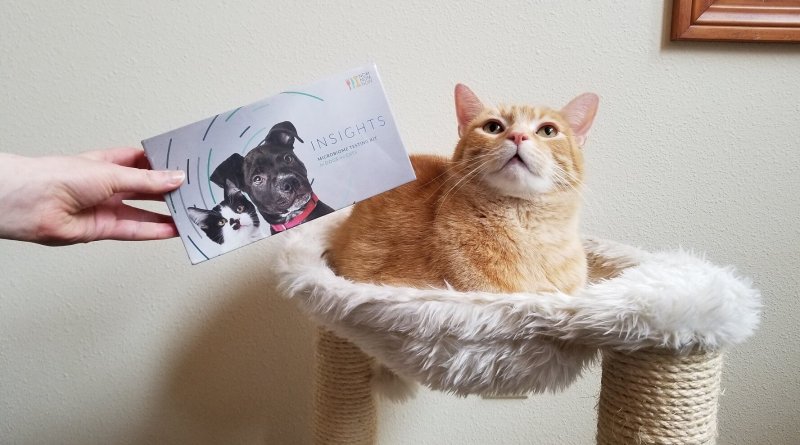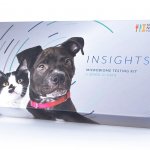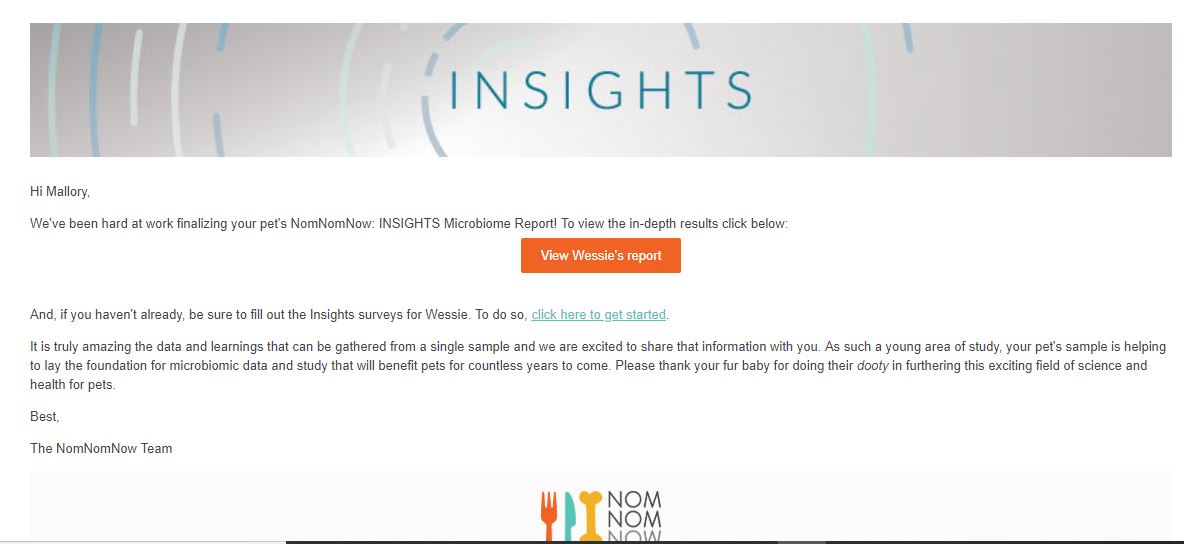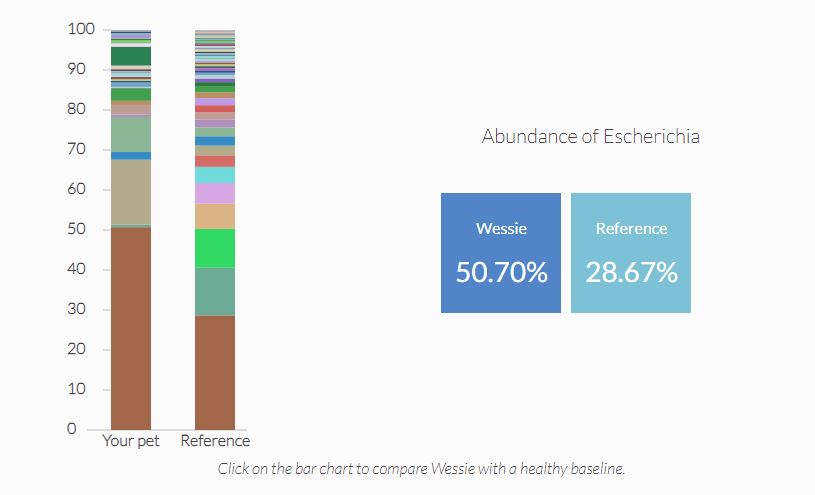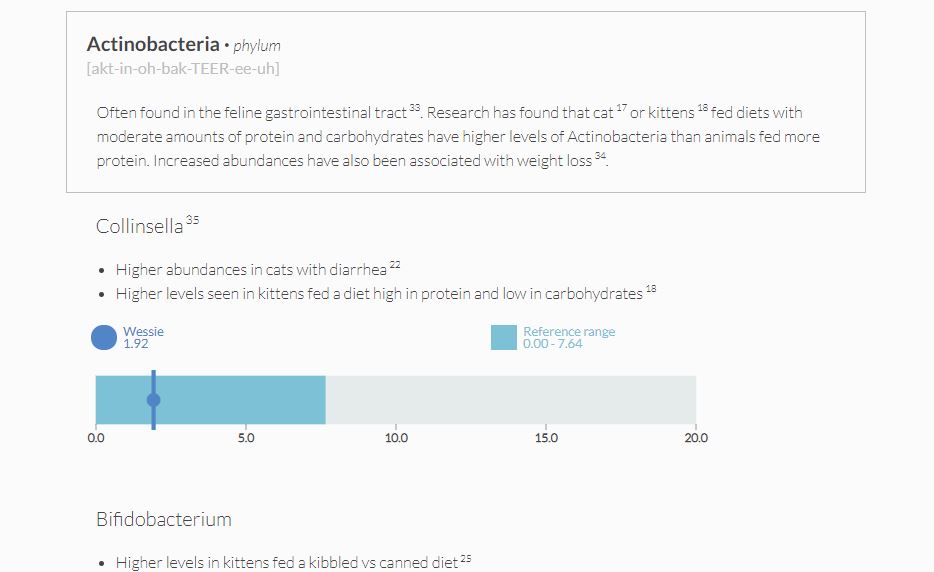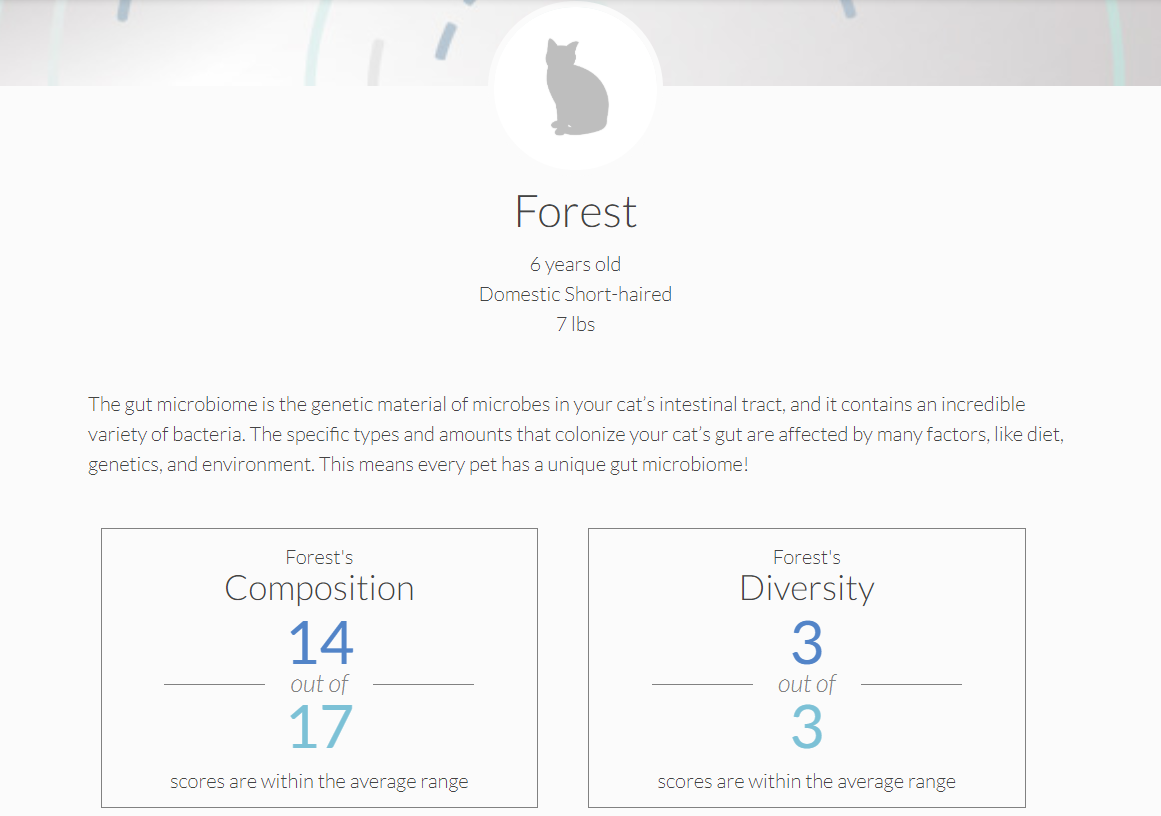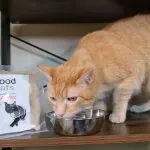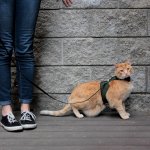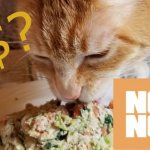Nom Nom Pet Microbiome Test Kit Review: What’s in Wessie’s Gut?
Last Updated on
Nom Nom Microbiome Test
$90.00It’s happened. I’ve reached full Cat Stalker Lady status.
For a week, I ran downstairs every time I heard that familiar scratching noise, slunk around the corner, and squinted to determine whether Wessie was in a tall-and-squeezy poop squat or a low-and-relaxed pee squat. The litter box was my treasure chest and a fresh, warm log was my gold. What had infected me with this lust for gold—or cat poop?
I was on a mission to find out about the tiny bugs living inside of Wessie’s gut. We’ve been following Nom Nom since they released their cat food and recently learned that they were developing a new project that would allow you to learn more about your cat’s microbiota. Just as we’re learning about the incredibly powerful way that our human gut flora can impact our health, we’re beginning to understand how our cats’ microbial ecosystem affects theirs.
By collecting a stool sample, stirring it up in a jar, and sending it off in a discreet yellow envelope, we could find out exactly what was living in Wessie’s gut. We’d gain insights into a powerful micro-world impacting his digestion, immune health, and nutrient absorption. Fascinating, right?
Want to skip the info and go straight to our personal review? Click here.
How does your cat’s gut flora affect his overall health, and what can the Nom Nom test kit tell us?
There’s still a lot to learn about our cats’ microbiomes and how they affect their health. For now, here’s what we do know. The bacterial population in your cat’s gut is integral to his health. While the feline microbiome in particular still doesn’t have much research and data backing it up, the microbiome, in general, has been found to affect the body’s immune system, digestion, mood, and nutrient absorption.
So far, researchers have noticed correlations between the populations of different microbe strains and GI conditions or diets. For example, cats who eat low-carb, high protein diets may have a similar bacterial profile. Cats with chronic diarrhea might harbor a higher population of other bacteria.
Nom Nom microbiome testing is not intended for use as a diagnostic tool.
However, for cats with chronic digestive issues, Nom Nom microbiome testing may shine some light on whether or not those issues could be related to your cat’s gut bacteria.
One thing that gets me excited about the Nom Nom Insights program is its potential to help further research on the feline microbiome. Not only do you get to learn more about your cat’s gut flora, but you’re also contributing to a better future understanding of the feline microbiome.
What is Nom Nom Insights, exactly?
Last year we tried Nom Nom’s fresh cat and dog food subscription service, but the company didn’t stop with pet food. They recently introduced Nom Nom Insights, a program based on ongoing research that can give us a greater understanding of our cats’ health.
Right now, the Insights program is all about your cat’s gut flora or microbiota—that’s the little world of super-small organisms that live inside of your cat’s digestive tract. Your cat’s microbiota is made up of bacteria, fungi, and viruses. Analysis of the microbiota has lead researchers to believe that these microorganisms have a significant influence over how the body processes food, fights disease, and regulates mood.
If you want to find out exactly which microorganisms make up your cat’s tiny inner world, the Nom Nom microbiome test kit provides you with everything you need to get started. A few weeks after you send off the sample, you’ll receive a detailed analysis of your cat’s microbiome along with the information you’ll need to interpret the results.
Who’s behind Nom Nom Insights?
Meet Director of Microbiology at Nom Nom: Dr. Ryan Honaker, Ph.D.
In January of 2018, Dr. Honaker joined the Nom Nom team as their Director of Microbiology. Today, he leads the Nom Nom Insights program and microbiome testing. Dr. Honaker has been fascinated by the microbiome and its relation to health, nutrition, and disease for years. As a postdoctoral fellow at Stanton University, he was part of a team researching the effects of the cancer-causing bacteria, Helicobacter pylori, on mice.
Today, his efforts are directed towards collecting information and advancing the research on the impact the microbiome has on pets.
Nom Nom Microbiome Test Kit Review: We Tested Our Cat’s Poop
The entire Nom Nom microbiome test kit is all bundled into and organized in this nifty little box containing:
- Instructions for taking the sample and registering your cat’s sample online
- A small prepaid and addressed envelope ready to send to the lab
- A card for your reference with the sample ID number and a place to write your cat’s name
- Two vials filled with a clear fluid
- Two special cotton swabs for collecting the sample
- Two baggies containing paper towels to absorb any moisture that might leak out of the vials
There are two of everything just in case something goes wrong with the first sample you take.
Then we had to wait for the cats to poop.
Waiting for fresh samples was the hard part.
Unfortunately for us, Wessie and Forest aren’t fond of pooping during the day. They creep into the litter box in the quiet dead of night, leaving us in the morning with gifts of unidentifiable descent.
So we waited with open ears, ready to race downstairs each time there was a scratch in the litter box. Finally, we found what we were looking for—fresh Wessie-produced cat poop.
Sample collection was super easy. We broke open the poop and used the included cotton swab to scoop up a pea-sized amount of stool. The cotton swab has a plastic applicator so you can easily lower the swab into the vial and then eject the cotton into the liquid. We sealed up the vial and shook it until the sample emulsified with the holding liquid. We put the sample into the baggie and wrote Wessie’s name on his reference card, making sure we matched the code on the card with the code on the bag. We didn’t want to get Wessie and Forests’ results mixed up.
The bag and vial went into the envelope and we dropped it in the mail.
It took a couple more weeks before we were able to get a fresh sample from Forest.
Next, we registered the cats online.
In order to access your results, you need to register your cat(s) and sample through https://www.nomnomnow.com/insights. If you’re a current Nom Nom customer, you’ll be prompted to log into your account.
If you’re not a regular Nom Nom pet food customer, just enter your email where prompted and you’ll receive a login URL in your email inbox. From that URL, you can enter the identification number from your reference card to register your cat and sample. Once the results come in, you will receive another email with a link back to this portal to view your cat’s complete results.
It takes 2-5 weeks to receive the results after the sample reaches the lab.
Once the fecal sample reached the lab, Wessie’s microbiome was processed through DNA sequencing.
Let’s talk more about that.
Until the 1990s, the study of microbes was limited. While researchers knew that microbes were an integral part of the body’s function and overall health, technology restricted their ability to study them. Culturing, staining, and microscopy brought an incredible amount of information to light, but there was still an entire world of microbes left untouched. Some microbes couldn’t be cultured—and therefore couldn’t be studied in-depth—until a new means of research was developed.
In 1991, the Human Genome Project began. This twelve-year project of identifying and sequencing the entire human genome spurred the development of more efficient DNA sequencing equipment. Not only did this technology make sequencing human DNA more efficient, but it also opened a new window into the miniature world of microbes. The microbes that couldn’t be cultured in vitro could now be analyzed and identified through DNA sequencing and the study of their genes.
It’s this DNA sequencing technology that makes projects like Nom Nom Insights possible on a large scale. Basically, your cat’s gut bacteria is going to have its DNA sequenced and identified. Researchers have noticed patterns—the number of certain types of microbes may relate to or indicate various health conditions.
To help the Nom Nom Insights team better understand the dynamic relationship between the microbiome and genetic, dietary, lifestyle, and health factors, they’ve created a series of surveys about your cat’s health.
Nom Nom uses the results of these surveys to better understand pet health and to grow the reference group in their microbiome research.
The Nom Nom Insights surveys cover:
- Health basics
- Microbiome
- Medical
- Oral Health
While we were waiting for the team to sequence Wessie’s microbiome, we filled out the series of surveys. In addition to supporting the research project, it was a good opportunity to reflect on his health and diet habits.
Finally, the results came in.
After a couple of weeks, we finally saw the email subject line we were looking for:
Your Microbiome Results Are In!
The report began with a simple introduction to the information we were about to see and explained that every cat’s microbe population is different due to the influence of genetics, diet, and the environment they live in. After that, there’s a summary covering the influence of fiber, probiotics and prebiotics, carbohydrates, protein, and exercise on our cats’ gut health.
Further down, there are two colorful bar charts. Each segment represents a type of bacteria.
The chart on the left represents Wessie’s microbiota, while the other represents a healthy baseline based on previous research. This healthy baseline may change as the Insights program grows and Nom Nom characterizes more healthy cat microbiomes. Clicking on the bars pulls up the name of the bacteria shown and the percentage it represents of Wessie’s total microbiota next to the reference percentage.
Further down the page, we found detailed descriptions of the different types of bacteria found in Wessie’s gut and the ways that those bacteria affect cats’ health.
Forest’s results came in a couple of weeks later.
Her gut microbiome appeared to be slightly richer than Wessie’s but equally diverse. In general, Forest was also right within the normal range, showing healthy populations of good bacteria and a generally even gut flora population. Like Wessie, she had slightly higher populations of bacteria commonly seen in cats who eat high-protein diets, which is what we expected.
Was Nom Nom microbiome testing worth it?
The answer depends on what you’re looking to get out of it.
For us, Nom Nom microbiome testing was a very interesting experience, and I like that we’re helping to contribute to the body of research on the feline microbiome and its effects on our cats’ health. If you’re a fan of citizen science projects and want to further our understanding of feline health, then yes, microbiome testing is worth it.
If your cat currently has digestive issues and you’re searching for answers, Nom Nom microbiome testing may be a good place to start your search. While the information provided won’t solve your cat’s digestive problems, you will be able to see if there are any drastic differences between your cat’s microbiome and the healthy baseline. Remember, Nom Nom microbiome testing is not meant as a diagnostic tool. It should only be used as a reference, not an end-all when considering whether or not you should change your cat’s diet or add a probiotic supplement to his meals.
Right now, Nom Nom microbiome testing and the Insights project is just a beginning. It’s an ambitious exploration of a previously poorly-understood aspect of our cats’ health—one that could potentially lead us to a greater understanding of digestive health and shine a light on chronic GI conditions like IBD.
Where can I buy the Nom Nom microbiome test kit for pets?
You can purchase a test kit for your cat or dog through the Nom Nom website. The kit currently costs $59.00 with free shipping.
Have you tried Nom Nom microbiome testing yet?
Please share your experience or any questions in our comments!

